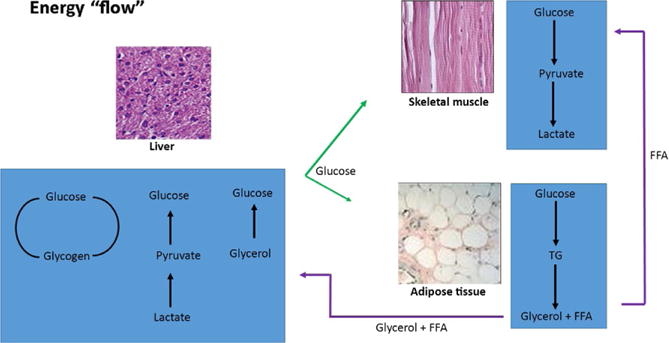Fig. 1.

Flow of energy in mammals. Energy is stored as glycogen, primarily in skeletal muscle and the liver. Free fatty acids (FFAs) are stored as triglycerides (TGs) predominantly in adipose tissue. When energy is scarce, these reserves are mobilized and released for use. The principle organ to mobilize glucose is the liver. The liver can produce glucose in two ways—by breaking down glycogen or by gluconeogenesis. Lactate is produced by skeletal muscles when they use glucose, and glycerol is produced by adipocytes when they mobilize the TGs. The principle cells that normally mobilize FFAs are the adipocytes. Images from www.slideshare.net/roger961/adipose-cells-kibbe-sandin-112105 and www.slideshare.net/aravindhravi88/histology-of-liver-by-aravindh-dpi/16.
